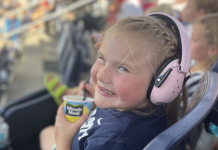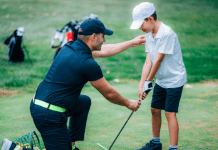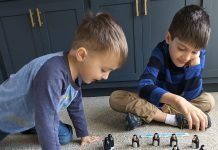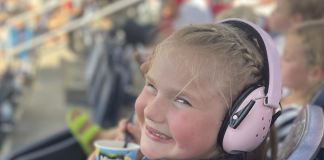Young children are not especially known for their subtlety. Not when it comes to expressing their style, their opinions, or their feelings.

We’ve all been witness to the meltdown in aisle 8, car seat tantrum, and the “I’M NOT TIRED” protest at bedtime. We know what BIG FEELINGS look like. Most of us probably know what BIG FEELINGS feel like ourselves.
I’m personally prone to BIG FEELINGS. If you’ve ever met me, this might surprise you given I once offered Kelly Cutrone’s tagline as my personal philosophy, “If you have to cry, go outside.” This philosophy is incredibly beneficial in my professional life (I run high-pressure campaigns against major food companies to improve the healthfulness of the foods they serve) but as you can imagine, it’s wildly inappropriate for raising a child.
Many thanks to wonders of therapy, I am not only once again in touch with my feelings, but I’m grateful for the whole lot of them. As Brene Brown notes in her revolutionary work on shame and vulnerability, “You cannot selectively numb emotion. When we numb [hard feelings], we numb joy, we numb gratitude, we numb happiness.” A fate none of us deserve.
It was during the process of getting back in touch with my own emotions – both the feeling and expressing of – that I discovered what has become the core of my (much healthier) parenting philosophy. Keeping in mind I am NOT a mental health professional and the world of parenting and child development is complex and multitudinal, I offer the following only as an example of what has worked for our family in the hope some families also find it beneficial.
In short, what I’ve learned about myself and consequently my daughter, is that often BIG FEELINGS indicate at least one of three (and often more than one) category of needs requires addressing. Those categories being protection, affection, or validation. When I reframe my daughter’s BIG FEELINGS as a need I am able to meet, instead of an interruption, inconvenience, or embarrassment, the situation becomes a lot more solvable.
So, if you’re like me and you find systems/structures/frameworks helpful, you might find value in thinking of BIG FEELINGS as representative of categorized needs – at least during the initial stages of addressing a meltdown, tantrum, or hyper-burst of destructive behavior.
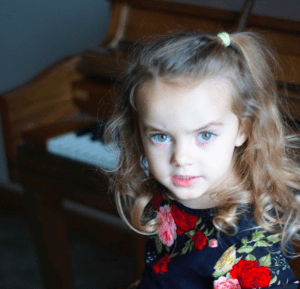
Protection
Protection encompasses the physical, mental, and emotional safety of your child. If your child gets hurt, feels uncomfortable or threatened, then stepping up to provide the protection they need is critical.
This can be one of the simplest to address but also one of the more delicate, especially if trauma is involved. When possible, demonstrating your ability to protect your child (finding band-aids, leaving a scary movie, telling a friend to stop pushing, etc…) is one many people find comes naturally. Think: mama bear.
Affection
Most of us rarely fail to meet this need – especially in the earliest years of our child’s life. After all, babies don’t keep and that laundry can wait while you rock them to sleep or hold them for hours.
As our children get older, this can feel a bit trickier. The good news is that affection isn’t exclusively reserved for lengthy snuggle sessions but comes in many forms. Think of affection as reassurance. For our teensiest ones, reassurance is the smell of our skin. The warmth of our bodies. The sway of our movement.
For our older ones, it’s a hug when they need it or a growth-oriented compliment like “I noticed you’ve been working hard on X and that means Y is getting better.” The key phrase, “I noticed” doesn’t go unnoticed by your child and reassures them that you 1) are paying attention and 2) they’re on the right path. As our children get more independent, our affection has to evolve, and that means noticing more and kissing-their-face-a-million-times less.
Too often “affection” and “attention” are conflated when trying to determine why our child is acting a certain way. As a former teacher, I can’t count the number of times I heard the phrase, “Oh he just wants attention” when trying to diagnose a “problem behavior.” In all fairness, maybe they did just want attention. But is it that much different than affection? Both scream: NOTICE ME and one is easier both easier and more effective to give.
Validation
OOOF, OK, the big one. Validation often looks like noticing the unpleasant BIG FEELINGS our kid is experiencing and demonstrating empathy. This one is, as you might have guessed, the hardest one for me – and probably for most of us. I mean, come on, unpleasant feelings are a major bummer, and I’d rather avoid them.
Fortunately for our children, if we’re able to provide validation during their most difficult moments, we can both minimize their pain and teach them the skill of being empathetic.
I’ll be honest here, I had to learn how to express genuine empathy. Not that I didn’t feel it. I mean, I used to be a farmed animal rights activist for goodness sake. I feel empathy, I understand pain. But being vulnerable enough to share and connect with other people’s sadness/shame/guilt/embarrassment/anger was hard.

And it’s especially hard for our children. Not only do they lack the ability to discern many of their feelings, they certainly are rarely in the position to name them. I’ve personally found the tried and true, “I know this feels terrible. I’ve felt this way before, too. When it’s over, you’re going to be OK. I’m going to make sure you’re OK” is the most effective way to calm my child when she feels frustrated/sad/SO MAD SHE DIDN’T GET THE TOY SHE WANTED RIGHT NOW!
More Often Than Not
I’m by no means perfect. I don’t get this right all the time. Sometimes I’m too depleted to give more of myself (S/O to my fellow moms, amiright?) and that means I lose my temper in Target and through clenched teeth tell my flailing child to “Get. Up. Right. Now.”
The important thing I’m trying and I’ve got a framework that helps me meet her needs more often than not. And when it comes to emotional needs being met, “more often than not” feels like a win.


